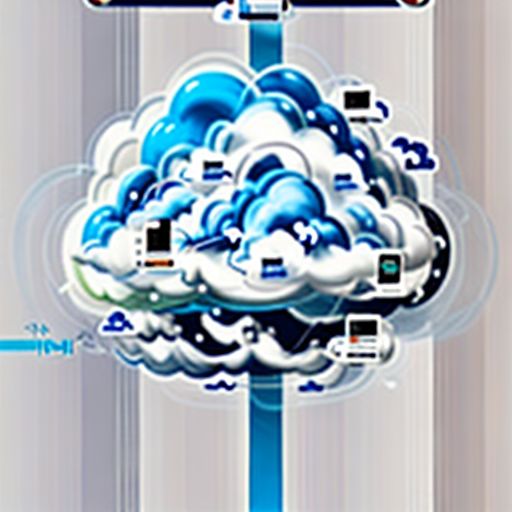What is Cloud Software as a Service (SaaS)? A Deep Dive
Imagine accessing powerful software applications from anywhere, anytime, without the hassle of installation, maintenance, or hefty upfront costs. That’s the beauty of Cloud Software As A Service, or SaaS as it’s commonly known. But what exactly is SaaS, and why is it taking the business world by storm? Let’s break it down.
Understanding Cloud Software As A Service (SaaS)
At its core, SaaS is a software distribution model where a third-party provider hosts and manages applications over the internet. Think of it as renting software instead of owning it. You access these applications through your web browser, paying a subscription fee instead of a large licensing fee.
cloud.ieltssieutoc.com/wp-content/uploads/2024/07/saas-model-669741.jpg" alt="Cloud Software as a Service Model" width="512" height="512">Cloud Software as a Service Model
How Does SaaS Work?
Instead of installing software on individual computers, you simply log in to your SaaS provider’s platform through a secure connection. All the heavy lifting, including data storage, security, and software updates, is handled by the provider. This makes SaaS a highly convenient and scalable solution for businesses of all sizes.
The Importance of SaaS in Today’s Business Landscape
SaaS has become an indispensable tool for businesses seeking agility, flexibility, and cost-effectiveness. Here’s why:
1. Cost Savings:
SaaS eliminates the need for expensive hardware, software licenses, and IT infrastructure. Subscription-based pricing makes it budget-friendly, especially for startups and small businesses.
2. Accessibility and Scalability:
Access your applications and data from anywhere with an internet connection. Scale your usage up or down as your business needs change, making SaaS ideal for growing companies.
3. Focus on Core Business:
By offloading software management to a third-party provider, businesses can free up valuable resources and focus on their core competencies.
4. Automatic Updates:
SaaS providers handle all software updates and patches, ensuring you always have access to the latest features and security enhancements.
Exploring Key Questions about SaaS
As with any transformative technology, there are common questions businesses have about SaaS:
1. What are some popular examples of SaaS?
Some of the most widely used SaaS applications include:
- Customer Relationship Management (CRM): Salesforce, HubSpot, Zoho CRM
- Enterprise Resource Planning (ERP): NetSuite, SAP Business ByDesign
- Project Management: Asana, Trello, Monday.com
- Communication and Collaboration: Slack, Microsoft Teams, Google Workspace
2. What are the security implications of using SaaS?
While SaaS providers prioritize data security, it’s crucial to choose reputable providers with robust security measures in place. Look for features like data encryption, access controls, and compliance certifications.
3. What happens to my data if I switch SaaS providers?
Most SaaS providers offer data export options. It’s essential to clarify data migration policies before committing to a provider.
Conclusion: Embracing the Power of SaaS
Cloud software as a service has revolutionized the way businesses access and utilize software. By understanding the benefits, addressing key concerns, and selecting the right providers, organizations can leverage the power of SaaS to drive innovation, enhance productivity, and achieve their business objectives.
We encourage you to share your thoughts and experiences with SaaS in the comments below. If you found this article helpful, don’t hesitate to share it with your network!
